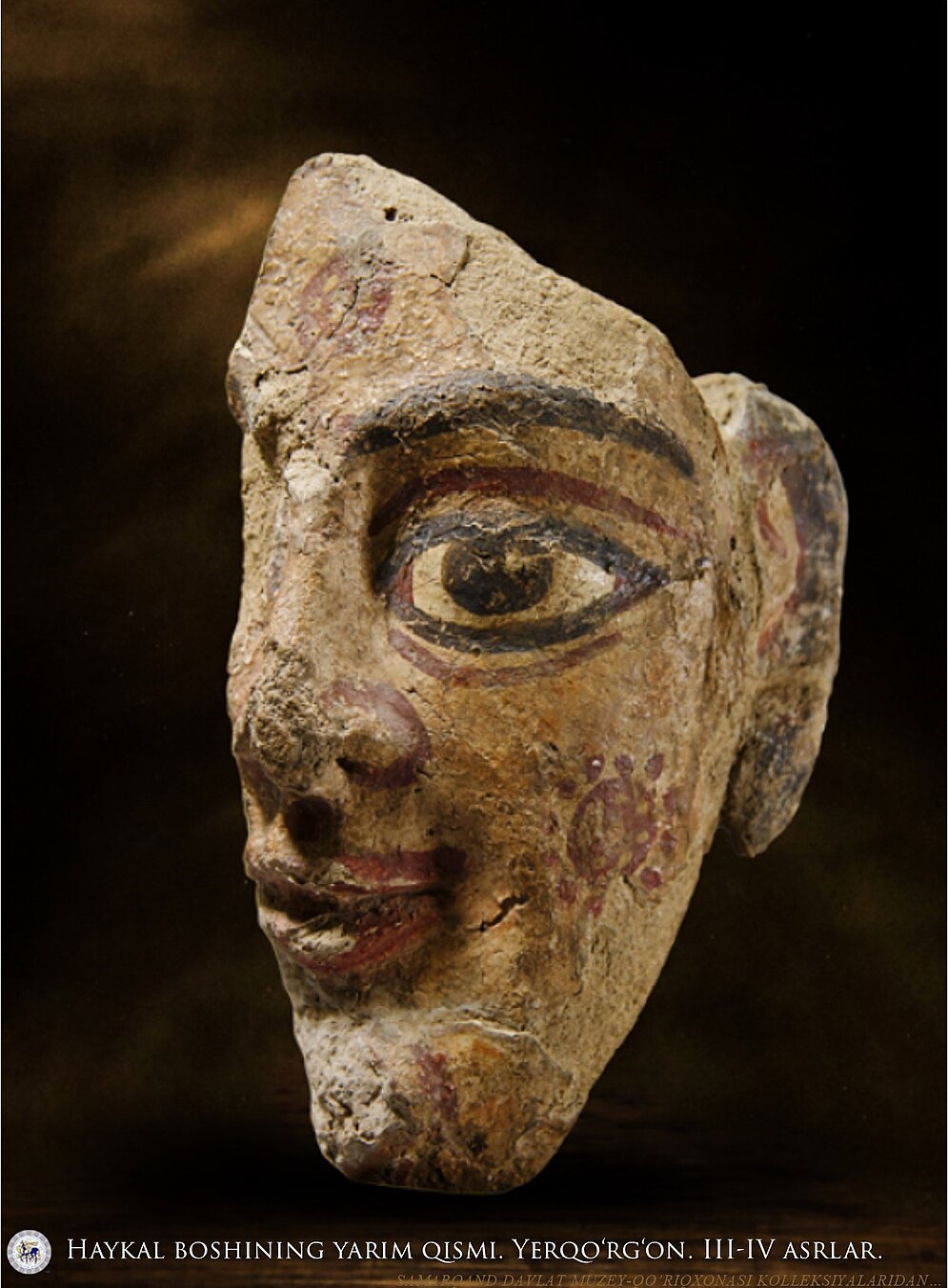The Sogdian/Hephthalite city of Erkurgan aka Nakhsheb 8th C. BCE - 6th C. CE
This city seems to have existed from the 8th C. BCE through the 6th C. CE. It was a city of Sogdiana that was part of the Hephthalite Empire when it was destroyed. It was hard to find info for dates on all items.
"The territory of Erkurgan is surrounded by hills of different sizes, consisting of the ruins of the old city, on the border of the inner and outer walls. The greatest height was found to be the ruler's palace. A citadel (a fortress inside the castle), a city temple, a mausoleum, a Zoroastrian temple, and artisan neighborhoods were also excavated. Around Erkurgan, there were completely lost, interconnected pre-city buildings, and in the first half of the first millennium, a well-equipped pre-city area stretched west to the banks of the Kashkadarya River.
In the 6th century, the city was completely destroyed. this occurred as a result of the Hephthalites losing control as a result of the invasion of the combined armies of the Turkish Hakans and the Iranian Sassanids."
-Оdilova F.O & Maxmatqulov I.T. Journal of Architectural Design, Volume 3 February 2022
 |
| Fragment from the "Tomb of the Rulers", 3rd-4th C. CE. |
 |
| Temple columns, 3rd-4th C. CE. |
 |
| Seal of Zeus from Greece? Unknown date. |
 |
| Temple column, 3rd-4th C. CE. |
 |
| Someone seated on a griffin or dragon? |
 |
| Terracotta, 3rd-4th C. CE. |
 |
| Drawing of figures on temple columns. |
 |
| Temple shrine. |
Source/Quote:
http://zhurnal.lib.ru/d/dolgaja_g_a/nahshab.shtml
https://www.wikiwand.com/uz/O%CA%BBzbekiston_madaniyati_va_san%CA%BCati_tarixi_davlat_muzeyi
https://commons.wikimedia.org/wiki/File:Sammuseum_31.jpg
https://ru-travel.livejournal.com/32183420.html
https://www.geniusjournals.org/index.php/jad/article/view/707/624
https://en.wikipedia.org/wiki/Qarshi














Comments
Post a Comment